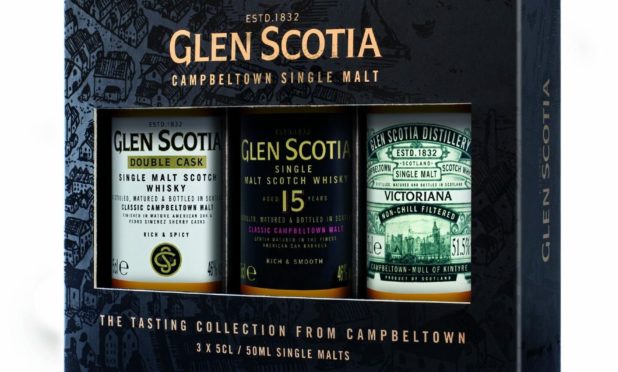Glen Scotia is, with Springbank and recently resurrected Glengyle, one of just three distilleries left in Campbeltown, which 120 years ago boasted around two dozen of them, hence its nickname Whiskyopolis.
The first Glen Scotia I tasted was 30 years ago.
Bought in a French supermarket, it was labelled Glen Fergus and had a daft label showing a knight in full armour outside a storm-lashed castle. But the whisky was great – intense and spicy, with salty-sweet overtones.
I recently enjoyed joining a virtual (but with five samples to hand) Glen Scotia 2021 “Dunnage Tasting”.
The samples ran from its baseline Double Cask – no age statement and 46% abv – to four cask-strength expressions: a first-fill bourbon; a first and refill bourbon; a refill bourbon finished for 18 months in an oloroso sherry butt; and refill bourbon finished for 18 months in a ruby port cask.
All were delectable, especially the sherry and port expressions, but they all possessed the intense spiciness and salty-sweetness I recall from that original bottle.
The distillery, first called Scotia, opened around 1832 and stayed in the same hands for 60 years, then with new owner Duncan MacCallum for another 30.
Like countless distilleries it was brought low in the 1920s, and was closed from 1928-33. It then endured several changes of ownership, before it was acquired by Canadian firm Hiram Walker in 1954, who then sold it in 1955 to Glasgow firm A. Gillies & Co.
Although it remained operational, the distillery became neglected. When I photographed it in the 1990s, it was the shabbiest distillery in all Scotland.
However, it was bought in 2014 by Loch Lomond, who invested heavily in the distillery – now agleam in brilliant white – a visitor centre and the brand, and gave head distiller Iain McAllister a free rein.
It was a bold move which has propelled an underrated and under-distributed whisky to a wider global audience.
Amid increasing automation, the distillery is a traditionalist’s dream, from the Victorian-era cast-iron mashtun (perhaps the secret of that unique flavour?) to casks stored dunnage-style – three rows high on oak planks.
Of their three “core range” whiskies, which include Double Cask and 15-Year-Old, the third is appositely named Victoriana.
